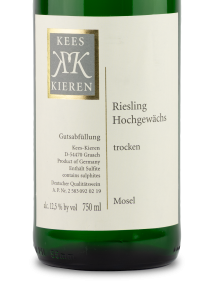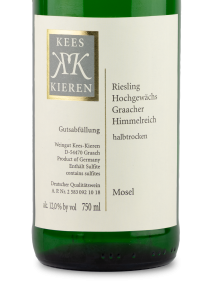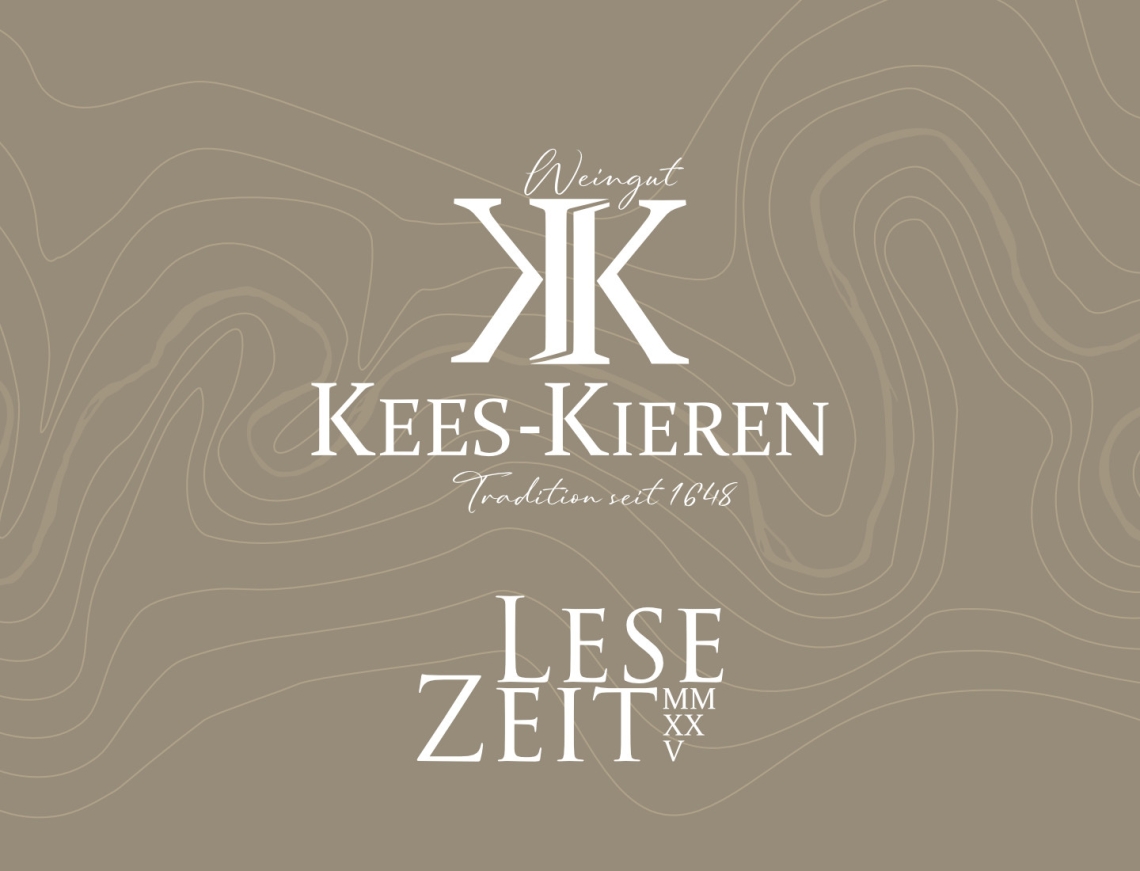
2025 the year
The start of the growing season was marked by a very dry spring: from February to May, only around 100 litres of precipitation fell. After that, the summer was changeable – sometimes hot and wet, sometimes pleasantly moderate. Until mid-July, it was a rather subdued, quiet summer overall.
August then gave us the best weather for wine: dry, with pleasant temperatures. Until the end of the month, it looked like we were in for a golden autumn with wonderful grapes of top quality and quantity. Unfortunately, September then brought us more rain than we had seen in a long time. In the first two weeks, the rain gauge showed 90 litres of precipitation. This was clearly too much for our grapes, which were already approaching peak ripeness very early on.
We had to act quickly. On 13 September, we started harvesting the grapes earlier than ever before in the history of the winery. The changeable weather with rain and heat quickly led to increasing rot. Highly ripe grapes and constant rain are a volatile combination. For us, this meant a lot of manual labour, careful sorting and a fast harvesting pace.
We can already say that the 2025 vintage will produce top quality in all areas, even if one or two barrels in the cellar will remain empty. We prefer quality over quantity.
2024 the vintage
The 2024 vintage impressed us right from the start. Even though there were no great “Auslesen” this time, the quality was consistently strong and reliable. A special highlight at the end of the year: we were able to harvest an ice wine – something that now only happens every four years on average.
The positive impression made by our 2024 collection has already been confirmed at many competitions. At the renowned Vinum Riesling Champion 2025, one of the most important Riesling competitions in the German-speaking world, we received gold with 91 points for our 2024 Erdener Treppchen Riesling Kabinett. A great result that confirms the strength of the vintage. And its ‘big brother’, the 2023 Erdener Treppchen Riesling Spätlese, was also in the spotlight, taking third place in the Spätlese category.
Another highlight was the Moselwein e.V. annual selection tasting in the spring. This tasting is considered an important benchmark for Mosel wineries, as it presents and evaluates a cross-section of the entire wine-growing region. We are delighted that all six wines submitted from the 2024 vintage were included in the recommendation list, which comprises the best wines in each category. Particularly noteworthy are:
1st place in the Riesling Gutswein Dry category with our Riesling Hochgewächs trocken
2nd place in the Riesling Ortswein Semi-Dry category with the Graacher Himmelreich Hochgewächs halbtrocken
The results so far were rounded off by the Mosel Cup of Gourmewelten. This competition is not only aimed at a specialist audience, but also focuses on the connection between enjoyment, gastronomy and wine. We are therefore all the more delighted to have been awarded the special prize ‘Collection of the Year’ – an honour that highlights the comprehensive quality of our entire range.
All in all, the 2024 vintage is one that is already a joy to drink and has us looking forward to the coming months with great anticipation.
Riesling Hochgewächs trocken
Unsere Hochgewächsweine sind typische Moselweine mit Garant für hohen Trinkfluss, ohne dabei Mineralität oder Aromatik missen zu müssen. Der Wein bildet im Bereich der Rieslinge die Basis und hat dabei bereits gehobene Ansprüche. Quasi ein Alltagswein im Sonntagsanzug.
Riesling Hochgewächs Graacher Himmelreich halbtrocken
Unsere Hochgewächsweine sind typische Moselweine mit Garant für hohen Trinkfluss, ohne dabei Mineralität oder Aromatik missen zu müssen. Der Wein bildet im Bereich der Rieslinge die Basis und hat dabei bereits gehobene Ansprüche. Quasi ein Alltagswein im Sonntagsanzug.
Viticulture From grape to bottle
After ending our last newletter with the pressing of the grapes, we now continue the journey from grape to bottle.
A slightly cloudy grape juice, known as must, flows from the presses. The taste and intensity of the must is crucial for the final quality of the wine, because any shortcomings in the quality of the must cannot be improved in the cellar.
The first step in the cellar is based on the principle of sedimentation. In our opinion, this is the gentlest method of removing sediment such as seeds, grape skins and pulp from the must. The use of minerals binds the sediment and causes it to sink to the bottom. After about 12 hours, the must is clear and we can send the clear must for fermentation.
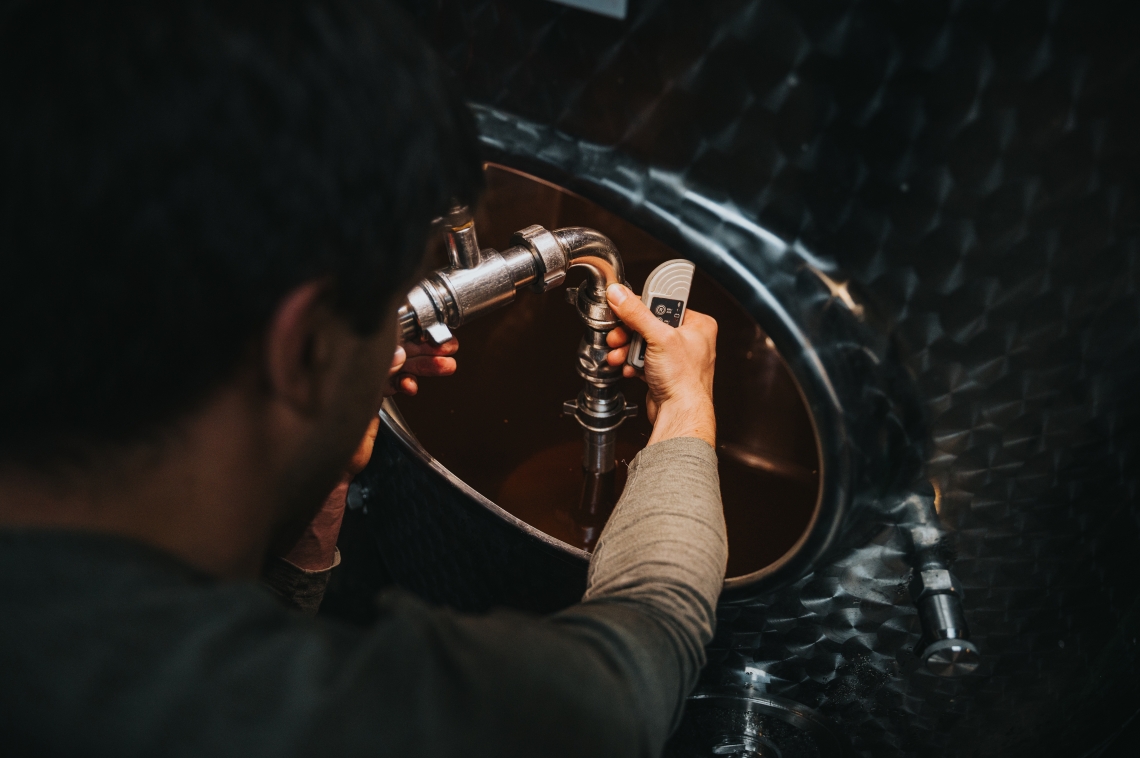
The selection of vineyard sites, parcells and quality levels, which began in the vineyard and continued during pressing, is now being continued. The smallest tanks, the glas ballons, are reserved for our highest quality and rarest Auslese***, Beerenauslese and Trockenbeerenauslese. Stainless steel tanks between 1000 and 2000 litres are our standard sizes for the remaining musts. The red wine matures in oak barriques.
The variety of tanks allows us to ferment each picking stage or parcel separately into a wine.
During fermentation, yeasts convert the sugar in the must into alcohol. For wines with residual sweetness or a delicate tartness, we interrupt the fermentation before all the sugar has been converted by cooling the tank significantly. This works because yeast is very sensitive to temperature. In order to choose the right moment, it is important to check all tanks daily for residual sugar. Of course, we also subject each tank to a sensory test. Incidentally, we decide whether a wine will be dry or sweet before pressing the grapes. The decisive factors here include the origin, must weight, quality and health of the grapes.
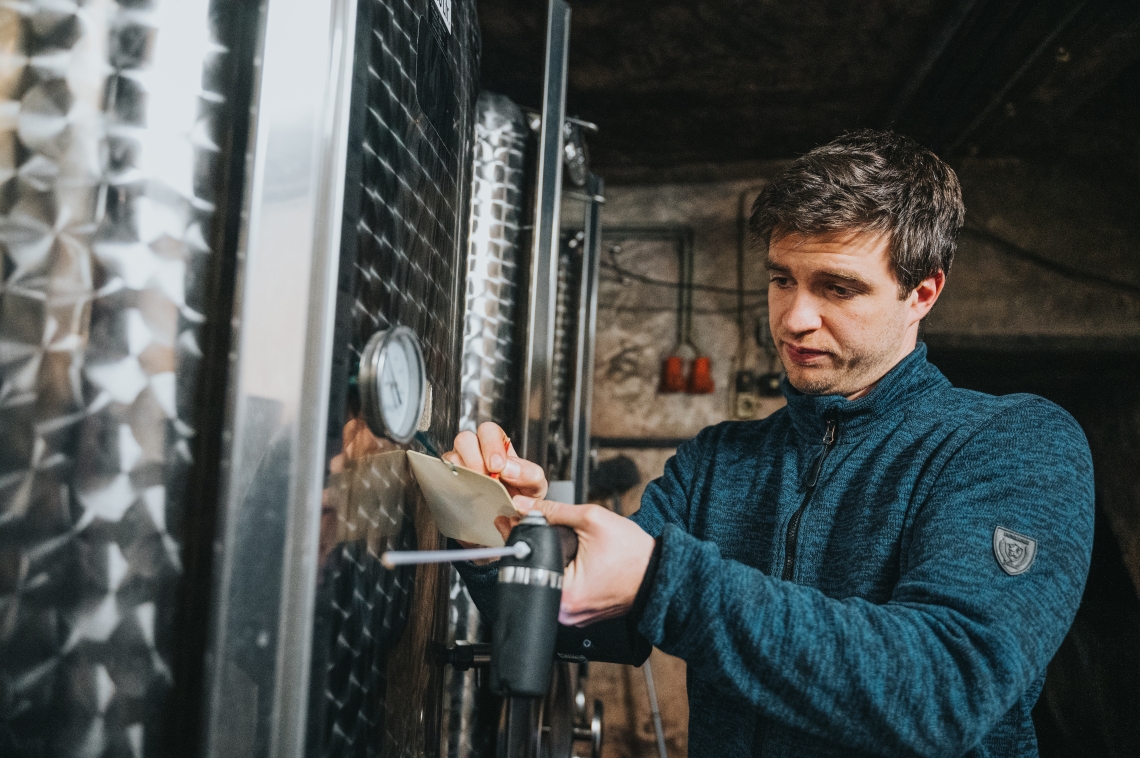
The process of grape harvesting, pressing, sedimentation and racking takes place almost daily over a period of three to four weeks. Every day, grapes arrive from the vineyards and decisions must be made about how to process them, while other batches are already well into fermentation. Fermentation control and tasting of the young wines often continues till December.
After an extensive resting period for the young wine, we begin separating it from the lees in the spring. Over time, these sink to the bottom of the tank, allowing the almost finished wine to become increasingly clear. After subsequent filtration, the wines open up properly for the first time and offer the opportunity for meaningful tasting. We taste each tank individually and evaluate the wine meticulously before deciding which tanks from the same vineyard will be combined to create the final wine. We attach particular importance to the consistency of the entire collection, so that the richness and complexity of the wines increases with each higher quality level. The Hochgewächs wines form a solid basis with high standards. The Kabinett wines are characterised by their lightness and drinkability. With the Spätlese wines and higher classifications, the expressiveness and powers continue to increase.
To ensure a long-lasting end product, sterility is ensured in a final filtration step. This prevents yeast, for example, from entering the bottle and starting fermentation again.
Bottling is carried out in cooperation with a contract bottler, who comes to our winery with a mobile bottling machine. Here, the wine finds its final way into the bottle. The end of a long journey from grape to wine.
After bottling, the bottles are taken to our cellar, where they wait eagerly under optimal conditions (dark and cool) to be labelled as needed and then put on sale.
